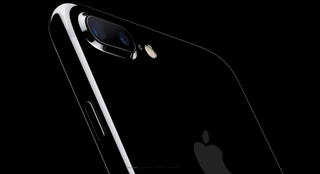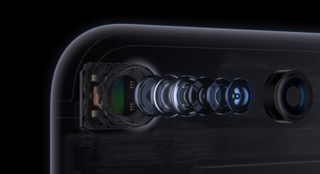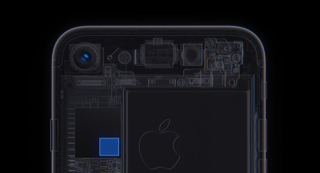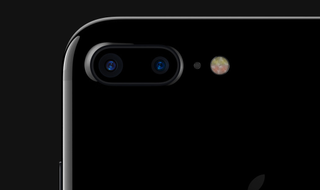iPhone 7 Camera Tech: Will Apple Be the Best Again?
From a wider aperture and a new ISP to two shooters on the Plus, Apple is promising a big leap with its new cameras on the iPhone 7.
The iPhone has long been one of the top picks for serious smartphone photographers. But recently, other companies such as Samsung and LG have stepped up their games, offering phones that meet or even exceed the photography prowess of Apple's devices.

With the iPhone 7 and iPhone 7 Plus, however, Apple made some big improvements to its camera tech, making it the perfect time to take a closer look at the new camera features and specs. Perhaps these additions will give the iPhone a shot at reclaiming the title for the best smartphone camera.

If you take a quick look at the latest iPhones' specs, you may think the potential improvement in picture quality over the last generation won't be that big. That's because the iPhone 7's 12-megapixel rear camera is the same resolution as the iPhone 6s' camera. But cameras can't be summed up by their resolutions alone, so let's dig a little deeper.
MORE: iPhone 7 Hands-on: The Plus Reigns Supreme
A wider aperture is a big deal
With its rear camera sporting an aperture of f/1.8 versus the iPhone 6s' f/2.2, the iPhone 7's rear camera is two-thirds of a stop faster than the iPhone 6s. This means that in the same situation, 66 percent more light will reach the iPhone 7's sensor compared to the iPhone 6s — that's quite a bit.
This should result in significantly brighter and less blurry photos in low-light scenarios. More light means the iPhone's camera can increase the shutter speed (reducing camera shake) and do more with what light there is in dim environments (so photos won't look as dark).

However, the iPhone 7's f/1.8 aperture is still slightly smaller than the f.1/7 aperture in Samsung's Galaxy S7 and Note 7 phones. This gives Samsung's phones an edge when it comes to how much light actually reaches the camera's sensor.
Optical image stabilization now on both iPhone 7s
Previously, one of the big reasons to spend more for the iPhone Plus was because the bigger iPhone's camera came with optical image stabilization. But both of the new iPhone models sport built-in OIS, so you'll get the same shake-reducing tech with either version. That means the camera on both phones can keep the shutter open longer without sacrificing sharpness.

Once again, Apple is catching up to other devices here. All versions of the Galaxy S6 and S7, as well as the LG G4 and G5 feature OIS. In fact, it's actually Sony who is leading the way in image stabilization on the recently announced Xperia XZ. It will bring five-axis OIS to smartphones for the first time.
MORE: The Best Places to Buy and Sell a Used iPhone
Apple's new ISP, Quad LED Flash and Flicker Sensor
An image signal processor (ISP) is the black magic that turns the data captured by a camera's sensor into a digital file that can be displayed on your screen or sent to others. On the iPhone 7, Apple claims that the new ISP built into the phone's A10 Fusion processor should allow for faster focus times, improved tone mapping and better white balance. This is just a general way of saying that your photos will look sharper and more accurate. But if the new ISP can really correct for some of the off-color shots we saw during our Galaxy S7 versus iPhone 6s face-off, it'll be a welcome upgrade.

The same could be said about the iPhone 7's new quad-LED flash, which attempts to adjust the intensity and color temperature of the flash to suit the surrounding environment. There's also the new iPhone flicker sensor, which can determine the kind of indoor lights that are around and automatically adjust the shutter speed to avoid the nasty strobe effect you sometimes get in shots.
Higher-res FaceTime Cam
For the selfie fanatics out there, let's not forget that the iPhone 7 front FaceTime cam has been upgraded with a 7-MP sensor and something Apple calls wide color capture. While I have to wonder about this ambiguous feature, it's nice to see Apple outdo the 5-MP selfie cam on the Galaxy S7, even if the LG G5's 8-MP front cam and the Xperia XZ's 13-MP front cam still lead the way.
What about the iPhone 7 Plus' dual cameras?
With the dual-camera setup on the iPhone 7 Plus, Apple has created a much larger gap in the photo-taking abilities of the standard model and its upsized bigger brother. Two cameras instead of one might make the Plus seem likes it's twice as good, but that means it's even more important to figure out what this dual cam setup can and can't do.
Pseudo 2X optical zoom
One of Apple's big new bullet points for the iPhone 7 Plus is the phone's 2X optical zoom, except that isn't quite an accurate description. What's really going on is that the iPhone 7 Plus' two cameras features different focal lengths, so you can switch between the two depending on whether you want to be closer or farther away.
One 12-MP camera has a 35mm equivalent focal length of 28mm and a f/1.8 lens, while the other 12-MP camera sports a 56mm focal length and a f/2.8 lens.

That's why, in the demos, Apple showed off a button in the camera app that switches from standard view directly to a 2X zoom, because there isn't actually anything in between.
It's kind of a low-tech solution to an otherwise complex problem, and it will certainly give the Plus a leg up on most smartphones that don't offer any sort of optical zoom. The iPhone 7 Plus can then go up to 10x digital zoom by sliding your finger from left to right.
Enhanced depth of field
Another advantage the dual-camera setup brings is that, similar to the way your eyes operate, the two cameras can work together to capture more depth information about your subject and the background behind it. Then, the phone can take that data and adjust the photo so that the background is even more out of focus, thereby increasing the picture's overall depth of field.
Other companies have tried putting dual-cameras on a smartphone before. LG uses it on the G5 and the upcoming V20 to provide a second camera with a superwide field of view — good for big landscape shots. Meanwhile, Huawei, echoing Apple, features two cameras in its P9 and Honor 8 phones to simulate a shallow depth of field effect.
RAW photos come to the iPhone
For photographers who want to get the absolute best photos out of their cameras, native RAW shooting on the iPhone 7 is a big deal. Instead of compressing and processing image data into a JPEG, the new iPhone will save photos in a much more unadulterated state. And with the iOS version of Adobe Lightroom soon to support editing in RAW, you will be able to produce sharper and more colorful pictures on your phone without ever needing a PC.
But again, at risk of sounding like a broken record, a lot of Android phones have supported RAW photos for a while, including the Galaxy S7, LG G5 and HTC 10. And if the rumors are true, the next iteration of Google's Camera app will also support shooting in RAW + JPEG modes.
Outlook
Contrary to the bravado Apple execs showed off on stage during the iPhone 7 launch, the phones new camera features — such as OIS on both models, an f/1.8 lens and RAW photo capture — are more about bringing the iPhone back up to par with rivals such as the Galaxy S7 and LG G5.
The iPhone 7 Plus' dual-camera features are welcome, but not exactly game-changing. So Apple's going to have to depend on its new six-element lens, improved ISP and flicker sensor to propel the iPhone the rest of the way. But until we actually get an iPhone in our hands, we won't know for sure. Check back with Tom's Guide for more iPhone 7 coverage as we get closer to the phones' release on Sept. 16.
Sign up to get the BEST of Tom’s Guide direct to your inbox.
Upgrade your life with a daily dose of the biggest tech news, lifestyle hacks and our curated analysis. Be the first to know about cutting-edge gadgets and the hottest deals.
Sam is a Senior Writer at Engadget and previously worked at Gizmodo as a Senior Reporter. Before that, he worked at Tom's Guide and Laptop Mag as a Staff Writer and Senior Product Review Analyst, overseeing benchmarks and testing for countless product reviews. He was also an archery instructor and a penguin trainer too (really).
